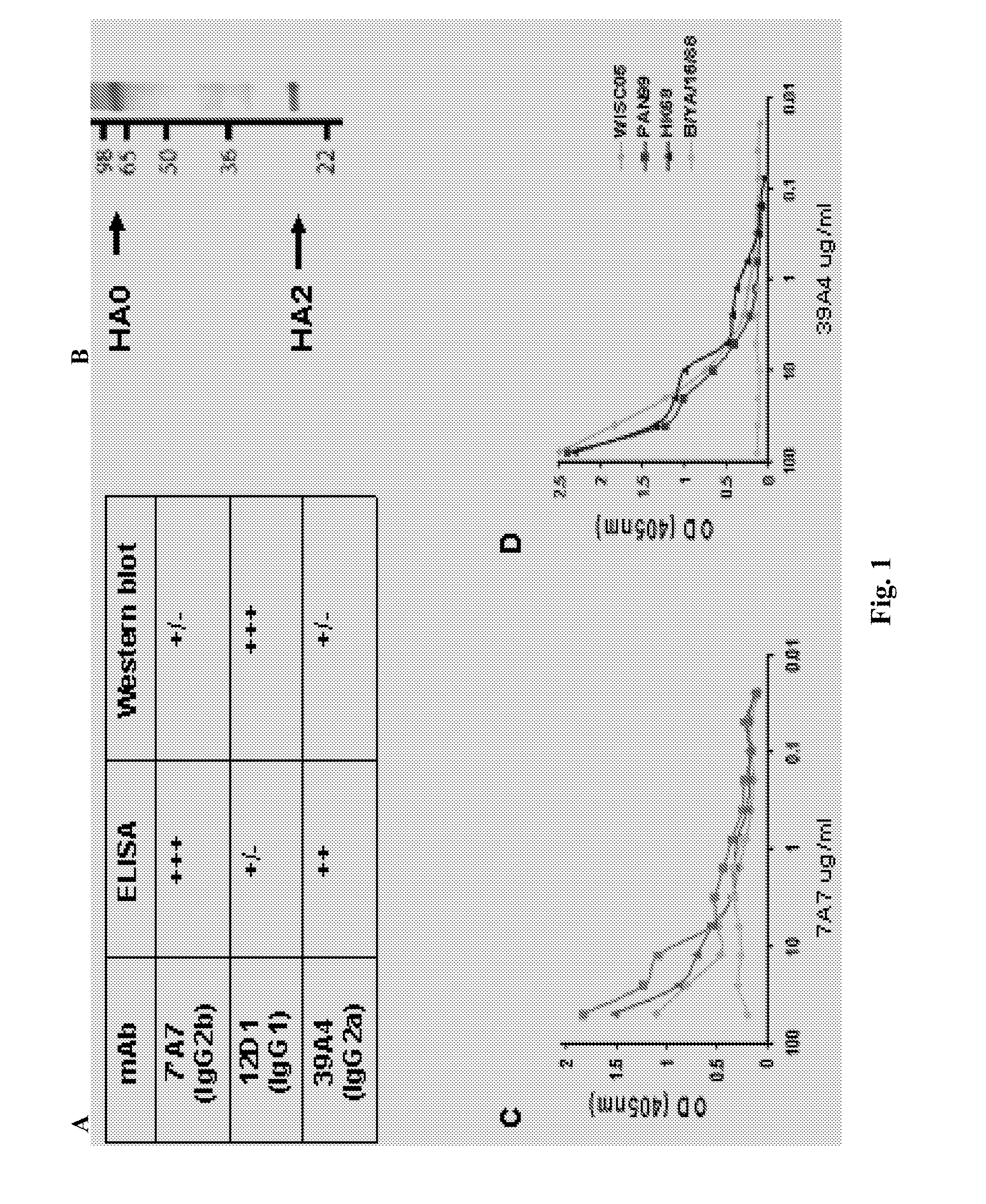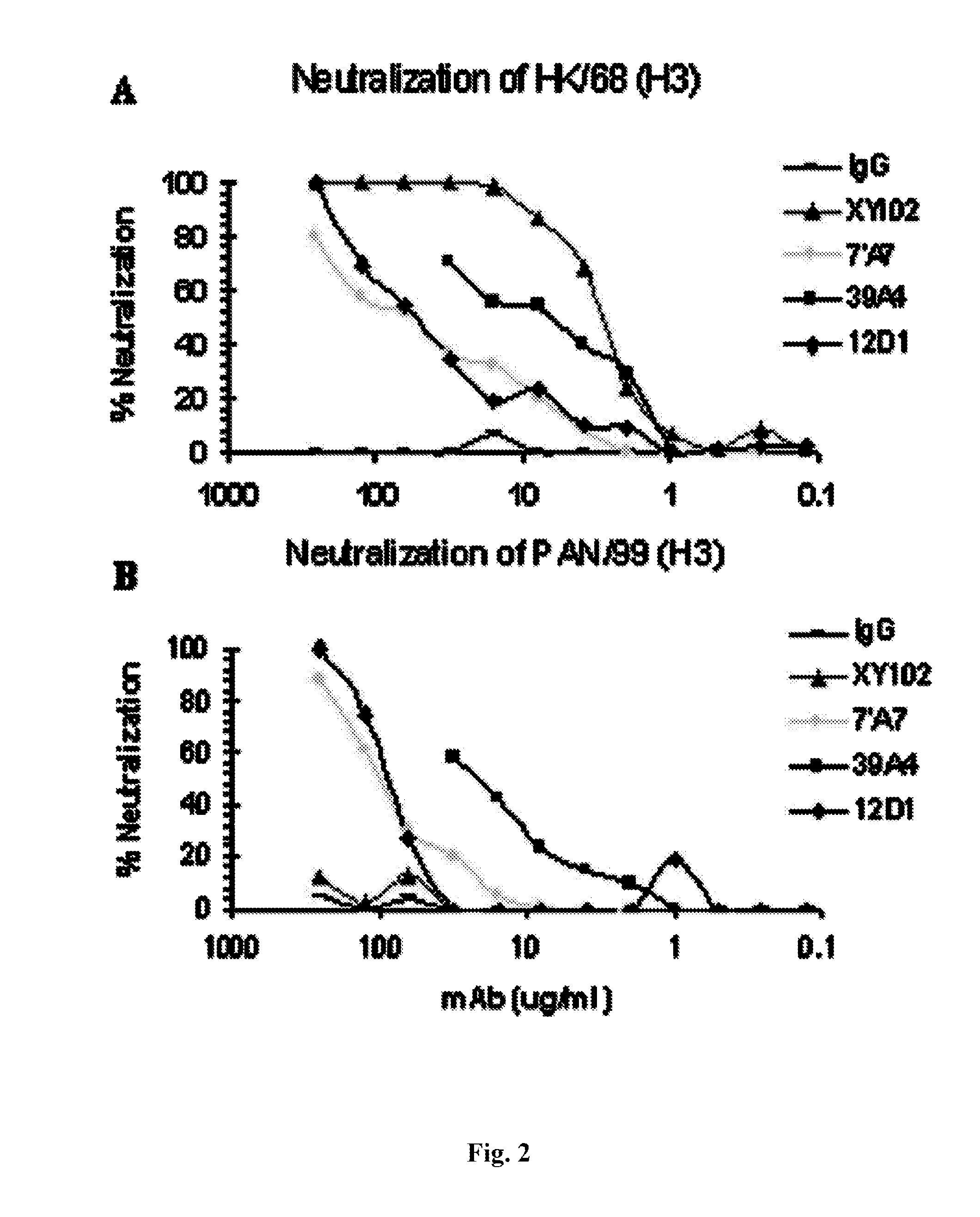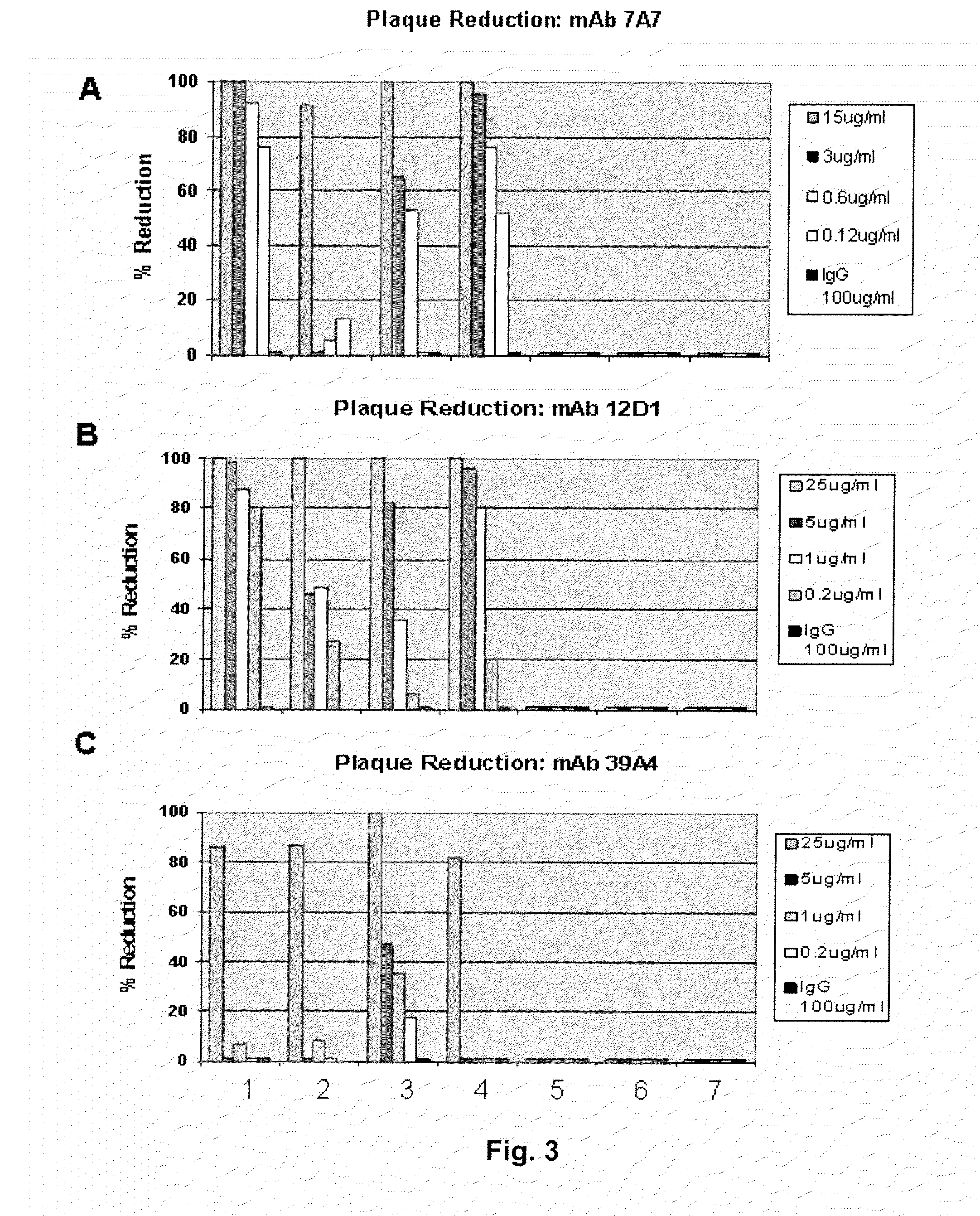Monoclonal antibodies against influenza virus generated by cyclical administration and uses thereof
a technology of monoclonal antibodies and influenza viruses, which is applied in the direction of fused cells, drug compositions, immunological disorders, etc., can solve the problems of inability to match, inability to prevent influenza viruses from spreading, and large pandemics, so as to reduce the duration, prevent the progression, and reduce the severity
- Summary
- Abstract
- Description
- Claims
- Application Information
AI Technical Summary
Benefits of technology
Problems solved by technology
Method used
Image
Examples
Embodiment Construction
5.1 Generation of Antibodies
[0090]Provided herein are methods for generating monoclonal antibodies that bind to an Influenza virus antigen. Such monoclonal antibodies may bind to an Influenza virus antigen on an Influenza virus particle, e.g., hemagglutinin. In a specific embodiment, the monoclonal antibodies bind to an Influenza virus particle. In another specific embodiment, the monoclonal antibodies selectively bind to hemagglutinin expressed by one, two, three or more strains of Influenza virus relative to a non-Influenza virus hemagglutinin antigen as assessed by techniques known in the art, e.g., ELISA, Western blot, FACs or BIACore. In other words, the monoclonal antibodies bind to hemagglutinin expressed by one, two, three or more strains of Influenza virus with a higher affinity than a non-Influenza virus hemagglutinin antigen as assessed by techniques known in the art, e.g., ELISA, Western blot, FACs or BIACore.
[0091]In a specific embodiment, a monoclonal antibody that bin...
PUM
| Property | Measurement | Unit |
|---|---|---|
| time | aaaaa | aaaaa |
| time | aaaaa | aaaaa |
| time | aaaaa | aaaaa |
Abstract
Description
Claims
Application Information
 Login to View More
Login to View More - R&D
- Intellectual Property
- Life Sciences
- Materials
- Tech Scout
- Unparalleled Data Quality
- Higher Quality Content
- 60% Fewer Hallucinations
Browse by: Latest US Patents, China's latest patents, Technical Efficacy Thesaurus, Application Domain, Technology Topic, Popular Technical Reports.
© 2025 PatSnap. All rights reserved.Legal|Privacy policy|Modern Slavery Act Transparency Statement|Sitemap|About US| Contact US: help@patsnap.com



